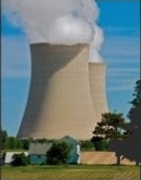ANDREWS, Tex. — Standing at the lip of what might be America’s most valuable hole in the ground, Rodney A. Baltzer cataloged the features that he said would isolate the radioactive waste to be buried here for thousands of years.
First, Mr. Baltzer said, there is a base layer of nearly waterproof clay, then a layer of concrete reinforced with steel and then three layers of plastic. When the waste, loaded into concrete containers, fills the pit, he said, it will be topped by a 40-foot-thick covering cap that includes more concrete, then more clay and finally a “bio-intrusion cap” to keep out burrowing prairie dogs.
All of which helps to make the hole, and others to be built adjacent to it over the next few years, a “money pit” in a very different sense of the term.
Space inside goes for $10,000 a cubic foot in some cases. Three-quarters of the money goes to Mr. Baltzer’s company, Waste Control Specialists, and the rest to the surrounding Andrews County and the state of Texas. WCS, as the company is known, has a monopoly: As aging nuclear reactors retire, their most radioactive steel, concrete and other components must be shipped for burial somewhere.
For 95 reactors in 29 states, Mr. Baltzer’s company is the only place that will take some categories of low-level waste. “We definitely haven’t won a lottery,” insisted Mr. Baltzer, the president of WCS. But, he acknowledged, “there’s obviously a large payback for what we’ve got invested.” The company in fact looks likely to collect a substantial part of the disposal fees paid for nuclear waste nationally, which the industry puts overall at $30 billion. Mr. Baltzer says that number is high, and that the total is probably more modest — say $15 billion.
[…]
Mr. Baltzer said 10 attempts had been made, with a total expenditure of $1 billion. “There’s an incredibly high barrier to entry,” he said.
His company succeeded in part by making a virtue of the region’s salient characteristic, drought. Intrusion by water, which would spread the waste, will be minimal, he said.
It also has strong local business support. Wesley R. Burnett, Andrews’s director of economic development, said the struggle to open the burial site began around 1992, when he was with the local Chamber of Commerce and oil, the mainstay of the local economy, fell to $8 a barrel. Today the region is so thick with fracking crews, coaxing new oil from old wells, that jobs are easy to find and hotel rooms are scarce, but that will not last forever, Mr. Burnett said.
Other local sentiment is not so positive. Rose Gardner, who was born in nearby Eunice, N.M., and runs Desert Rose, a flower and gift shop there, said it was impossible to keep burying radioactive materials and not expect trouble.
[…]
Environmentalists are divided over WCS.
“I was impressed with their low-level waste cell,” said Scott A. Kovac, operations and research director of Nuclear Watch New Mexico, which has criticized the Energy Department’s operations at the Los Alamos National Laboratory. WCS was “a generation above anything at Los Alamos,” Mr. Kovac said. (WCS takes wastes from Los Alamos and other government plants, as well as hazardous nonradioactive wastes.)
But Tom Smith, an energy and environment specialist at Public Citizen in Austin, Tex., said he was concerned that maps previously showed an aquifer under the site. The maps were more recently redrawn after testing to show the aquifer ending northeast of the site, but the testing, said Mr. Smith, was done at the Texas Tech University System, where the chancellor, Kent Hance, was once a lobbyist for WCS.




